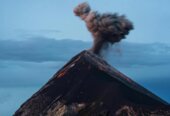The hui at Turangawaewae on January 20 was more than a celebration of Māoridom’s assertion of tino rangatiratanga and mana motuhake.
The strongest of signals was sent to all who might pay some attention to Māoridom’s aspirations and hopes for themselves and all of Aotearoa New Zealand. The positivity in the gathering of more than 10,000 people, iwi Māori from all corners of the land, old and young, of all political and other persuasions, and significant numbers of other-than-Māori was palpable.

Tom Roa
This was evidenced from the first karakia raising the Kīngitanga flags, to the last karakia lowering those symbols of the Kīngitanga whose purpose from its inception is to hold fast to the land; to stop the shedding of blood amongst the tribes, and to maintain and sustain mana Māori motuhake by uniting the people.
A principle upheld to this very day is the assertion by the first Māori King Potatau Te Wherowhero, ‘Kotahi te kōwhao o te ngira e kuhuna atu ai te miro pango, te miro mā, te miro whero.’ There is but one eye of the needle through which must pass the black thread (the Māori people); the white thread (the Pākehā – Europeans) and the red thread (red – the colour of the nobility). That spirit was evident as people shared formally on the marae and in workshops, as well as in informal gatherings the importance of working together, bringing all threads together through the eye of the needle. And in that weaving create a new entity stronger for the fusion of the various threads.
The Coalition Government’s stated intentions with re-examining (re-wording? re-negotiating?) Te Tiriti o Waitangi; with the privileging of English (devaluing of Māori Language?) and its assertions that their intention is to bring people together has captured the attention of ‘ngā hau e whā’, the four winds of Māoridom and other New Zealanders.
Far from the hui being, as the deputy leader of New Zealand First asserted it would be, a whinge session of monumental proportions, the overwhelming message was that of a unity amongst Māori, which would extend across the land in the unifying of all New Zealanders and the fulfilling of the promises in Te Tiriti o Waitangi and the assertion of Kingi Pōtatau Te Wherowhero’s vision of all threads coming though the eye of the needle. Each retaining its own integrity, but together creating something new with its own potential.
The calling of the hui is a model for democracy at its best. Māori rangatira sought the leadership of their King, with his proclamation via his Coat of Arms, Te Paki o Matariki, for iwi Māori to gather in the spirit of unity – kotahitanga – to ‘wānanga’ and to consider positive steps forward in the principled messages in Te Tiriti o Waitangi, and the support for the revival and survival of Māori language,.
King Potatau Te Wherowhero’s words are furthered in his succesor King Tawhiao’s ‘tongi’ ‘Ki te kotahi te kākaho ka whati; ki te kapuia, e kore e whati.’
The single reed singly will break. Bunched together, never.

Ngāruawāhia, home to Turangawaewae.








